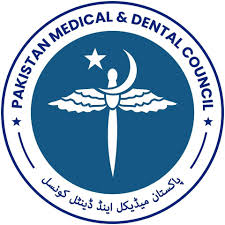Prevalence of Myopia and Peripheral Retinal Degeneration in Medical Students of Fatima Jinnah Medical University
Keywords:
myopia, peripheral retina degenerationAbstract
Introduction: Prevalence of refractive error especially myopia in medical students is high. Documented data pertaining to this question this is not well surveyed in medical students of Pakistan.
Objective: The present study will aim to determine the prevalence rate of myopia in medical students of female medical university in Pakistan.
Study design: Cross sectional, observational study
Materials and Methods: 250 female medical students of 4th year Fatima Jinnah Medical University were evaluated for myopia and dilated fundus examination to rule out peripheral retinal degeneration associated with myopia. All students’ myopic refractive error was assessed using retinoscope and auto-refractometer. Refractive errors have been further categorized according to the Diopteric power. Pupil dilation done with help of tropicamide and retinal examination with indirect ophthalmoscopy and non-contact lens slit lamp biomicroscopy.
Results: Out of 250 medical students, 153 (61.2%) were Myopes. Further subdivision showed 105 (68.63%) as low myopes, 44 (28.76%) as moderate and 4(2.61%) as high myopes. Genetic influence of either or both parents was found in 110 (71.9%) 0f myopes. Peripheral retinal degeneration was found in 33 (21.6%) eyes with retinal breaks in 5 (3.2%) eyes.
Conclusion: Prevalence of myopia is high in medical students and they are more prone to developing early peripheral retinal degeneration.
Downloads
Published
How to Cite
Issue
Section
License
The Journal of Fatima Jinnah Medical University follows the Attribution Creative Commons-Non commercial (CC BY-NC) license which allows the users to copy and redistribute the material in any medium or format, remix, transform and build upon the material. The users must give credit to the source and indicate, provide a link to the license, and indicate if changes were made. However, the CC By-NC license restricts the use of material for commercial purposes. For further details about the license please check the Creative Commons website. The editorial board of JFJMU strives hard for the authenticity and accuracy of the material published in the journal. However, findings and statements are views of the authors and do not necessarily represent views of the Editorial Board.

















